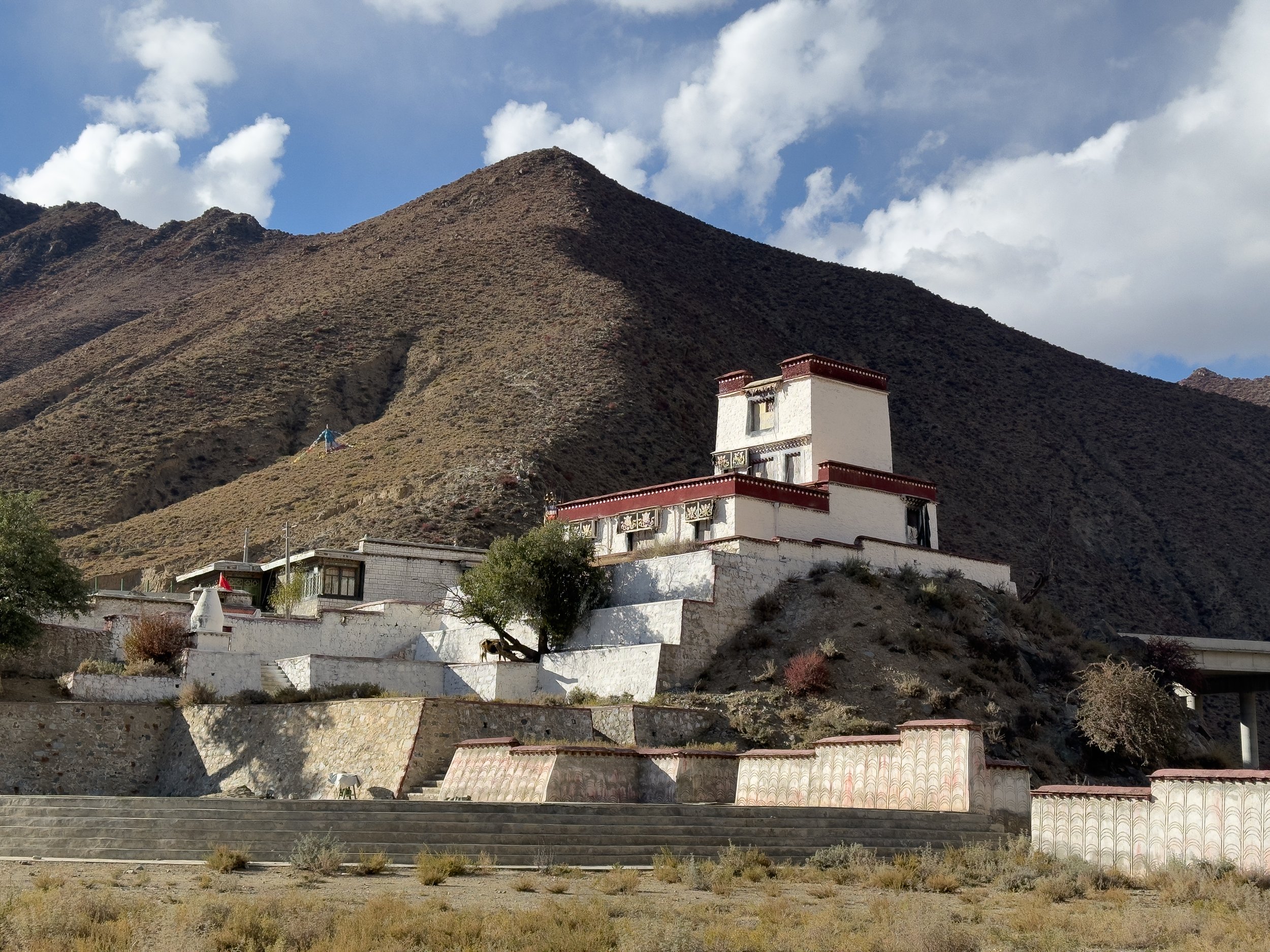Drakmar Drinzang
“Bodhisattva appearing as a Dharma King,
in this remote Land of Snows you tamed every being in need
through a myriad of skillful means—
Trisong Detsen: to you I pray!”
Temple near the Sandalwood tree ruins, birthplace of Trisong Detsen
at a glance
The extraordinary life of Dharma King Trisong Detsen begins in the Drakmar Valley (Valley of Red Rocks), where the royal family had made their residence, at the Drinzang Palace. The exceptional life of Dharma King Trisong Detsen—devotee, practitioner, and ruler—still resonates to this present day. Had it not been for his unwavering dedication and generosity, the Buddha’s teachings of Sutra and Tantra would not have taken root and spread over that vast plateau, transforming an entire culture in the process.
the story
When Tibet’s great Dharma King Trisong Detsen finally took birth in the royal temple of Drakmar Drinzang, a wondrous display of light filled the red rock valley, a sign of great joy to come. Within these walls, the young king’s wish to establish the Dharma in Tibet gradually took root. His wish soon became an unshakeable quest to build Tibet’s first monastery, and for this he would seek guidance from the Indian pandita Abbot Shantarakshita. Their initial decisive steps, however, would be met with fierce opposition from forces resistant to change. From his palace at Drakmar Drinzang, King Trisong Detsen negotiated this upwelling of evil spirits, some of whom appeared in the form of ministers who would do anything in their power to block the spread of the Three Jewels—Buddha, Dharma, and Sangha—in the land of Tibet.
Faced with such obstacles, this closest spiritual friend of the Dharma King, the great Abbot Shantarakshita, invoked the aspirations made lifetimes ago in front of the Jarung Kashor Stupa in Boudha, Nepal—and knew they must invite the powerful tantric master Guru Padmsambhava from India. Only the Mahaguru could quell the dark forces of the land––and let in the bright light of the Buddha’s wisdom to bless the Tibetan people, and the world at large.
Words from the Masters
Jamgön Mipham Rinpoche’s Praises to the Great Dharma Emperor Tri Songdetsen
How to get there
Drakmar Drinzang (29°22'47"N 91°30'21"E) is located around two and a half hours from Lhasa and is accessible by road. The trip will take you past Samye Monastery, roughly six kilometers into the Drakmar Valley. Today, only ruins remain on the site where the great Dharma king was born, just west of the road. These ruins are said to be the actual remains of King Trisong Detsen’s royal abode.
While at the main site
Twelve centuries have passed since the momentous occasion of Dharma King Trisong Detsen’s birth. Over time, the temple became a place of pilgrimage, a place to remember the collective accomplishments of the king. Today only ruins are left, but Jamyang Khyentsé Wangpo, when he visited in the 19th century, wrote of its recent renovation, and Katok Situ Chökyi Gyatso, visiting some decades later, in the early 20th century, wrote that Drakmar Drinzang featured life-sized statues of Buddha Shakyamuni, Guru Padmsamabhava, and the three great Tibetan Dharma Kings––Songtsen Gampo, Trisong Detsen, and his grandson Tri Ralpachen. Both Khyentsé Wangpo and Katok Situ found the sandalwood “life-force tree,” lha shing, of King Trisong Detsen, below the temple and encircled within a shrine. A structure has been built around the enshrined ruins of the sandalwood tree. Due to the ravages of time, only the foundations of the original site remain, and yet it is through these remains that the deeds of these masters can still be remembered, for we have not yet forgotten their impact on our world.

